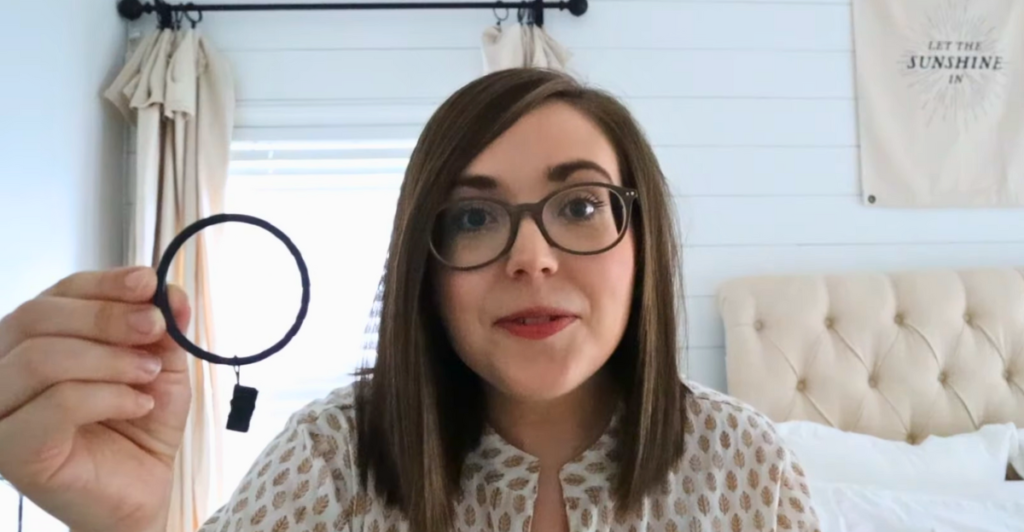
In an era where we can adjust opacity with a smartphone and control light through AI-driven tinting films, you might think traditional curtains are obsolete. Yet, curtains don’t just function to block light—they’re emotional texture, architectural punctuation, and, literally, mood-setters.
According to the U.S. Department of Energy, curtains help to conserve 25% of heat loss during winter, showing they’re not just surface-level fluff. Additionally, curtains insulate more than temperature; they buffer our over-sensitized minds.
And DIY? It opens the door to more personalized, artistic, and inexpensive options, different from cookie-cutter interiors. Let’s take a look at 10 DIY curtain ideas that can help make your home beautiful.
1. Drop Cloth Curtains: The Industrial-Aesthetic Marriage
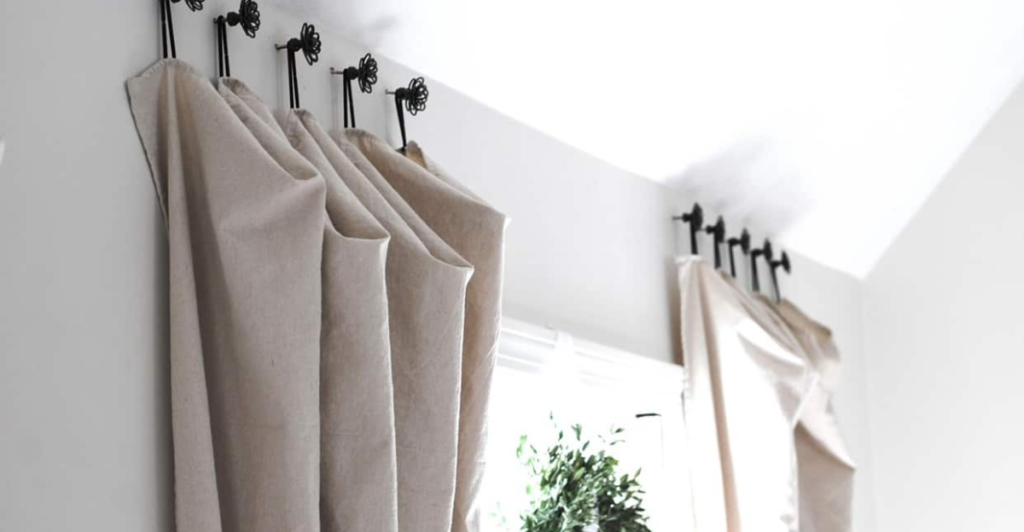
Industrial cool intersects farmhouse practicality in this surprisingly sophisticated solution. Drop cloth curtains are a DIY designer favorite because they’re almost free, need no sewing skill, and offer a luxurious look without the $400 price tag.
Further, to make it more personalized, you can dye them, stencil them, or leave them in their original state for a soft linen look. The trick lies in pairing them with aggressive metal hardware for a utilitarian contrast.
The combination is indicative of a more pervasive cultural mashup—post-industrial nostalgia and green minimalism. It’s elegance born of grit.
2. No-Sew Curtains: Hot Glue Is the New Thread
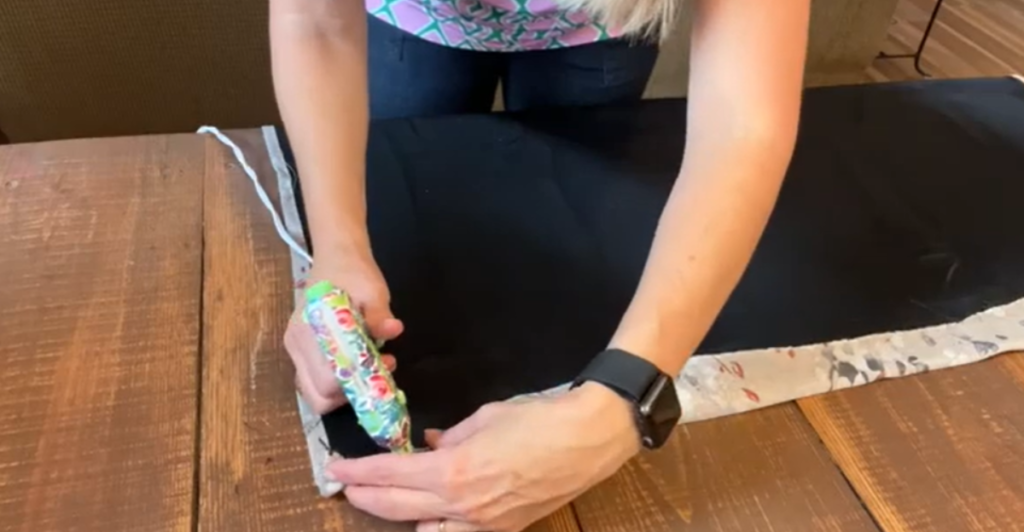
Sewing machines can be intimidating—mechanical beasts with tension knobs and bobbins. Enter the no-sew curtain, a people’s revolution in interior design. With a hot glue gun, fusible bonding tape, or an iron-on hem, you can make custom panels in under an hour.
Using a variety of materials, such as tablecloths, bedsheets, or even vintage saris, to make curtains, you can relatively easily curate a designer look that suits your interior design vision.
Further, sewing isn’t necessarily optimal. Glue offers flexibility, especially for renters or those who redecorate seasonally. Therefore, stitch-free does not mean style-free. It’s the punk rock of curtain-making.
3. Macrame Curtains: Boho Meets Structural Engineering

Macrame curtains are where fiber art and functionality coexist. They recall the millennia-old culture of fishermen, sailors, and Andean people’s knotting practices—now re-born in Bohemian-style apartments and minimalistic modern studios.
Macrame transforms a flat space into a tactile experience, manipulating light and shadow like architectural screens. For example, you can use macrame curtains as art pieces or partitioning to help divide small spaces.
Want to take this DIY trick further? Play with copper pipe as a rod, or thread LED strips through the knots to achieve kinetic lightplay. It’s not a curtain; it’s spatial storytelling.
4. Beaded Curtains: 1970s Psychedelia Revived

Previously relegated to campy relics of the lava-lamp era, beaded curtains are making a devious comeback. And why shouldn’t they? They’re textural, playfully whimsical, and acoustically interesting.
Modern DIYers are replacing plastic with wood, crystal, or laser-cut acrylic curtains, making them a sustainable option. If you’d like to get really creative, consider constructing one from recycled computer keys or seashells you’ve accumulated while traveling.
They are essentially sound sculptures, while the beaded strands create flow without stiffness, helping to create an overall calming and tactile experience. It’s nostalgia crashing into sustainability.
5. Renter-Friendly Tension Rod Curtains: Elegance Without Drilling
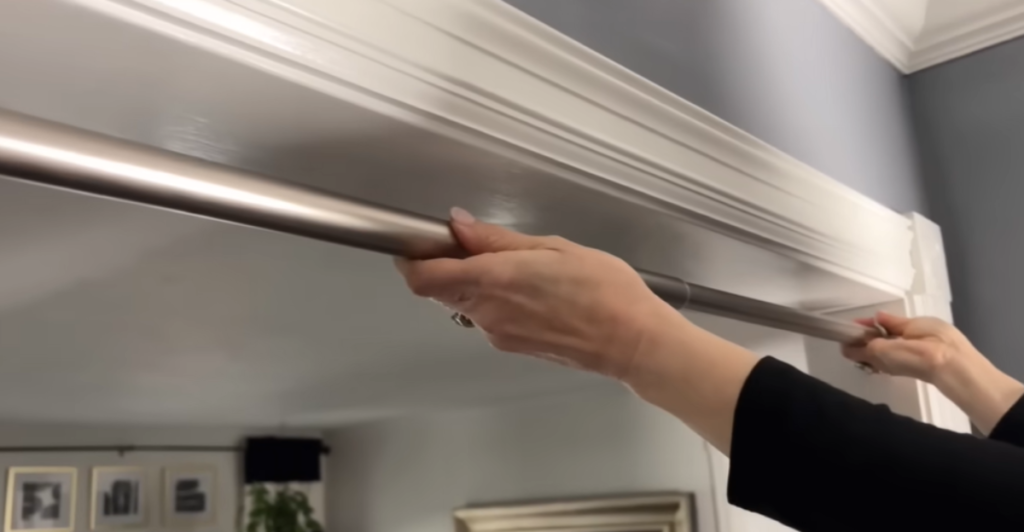
Commitment-free curtains? Say hello to tension rods. Great for renters or chronic redecorators, tension rods let you hang curtains without drilling holes into the walls.
But the real trick is to layer your fabrics. For example, use a double rod setup with sheers upfront and blackout material in the rear for an upscale, hotel-chic feel.
By nature, people want to be able to alter their environment, and tension rods provide exactly that. Using them to hang curtains allows you to change out the fabric or color within minutes to refresh your home’s overall look and feel. And the best part? It all comes crashing down in five seconds flat.
6. Scarf Valances: The Curtain as Couture
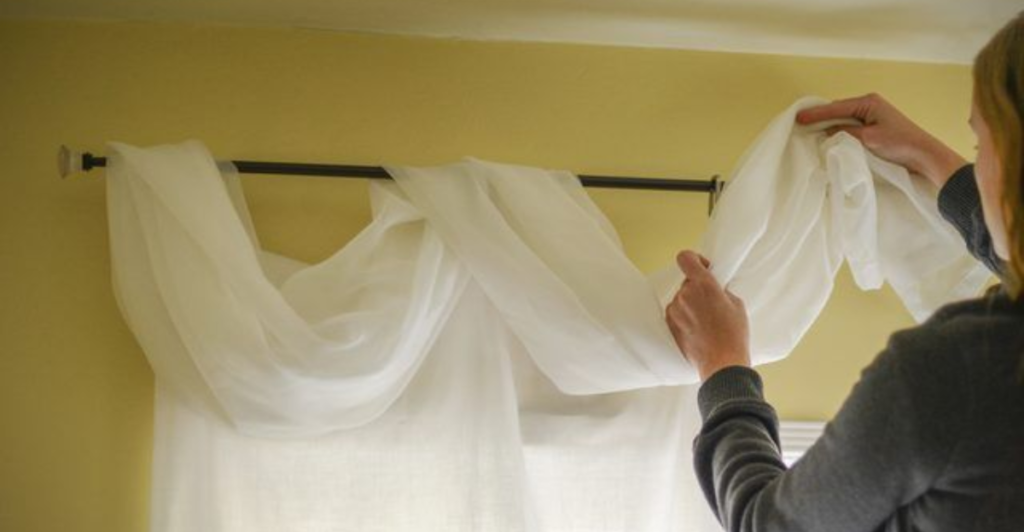
What if your curtain were sporting a scarf? That’s essentially what scarf valances are—a draped layer of material that brings movement and a chic touch to what otherwise might be a purely practical item. Scarf valances have the elegance of a Grecian toga or Parisian window treatment, but are really easy to make yourself.
Grab some fabric and curtain hooks and start draping. While previously considered a mark of old luxury, draping can actually modernize a room if done with intention. If curtains are the outfit, scarf valances are the accessories that tie the entire look together.
7. Shower Curtain Hack: Bathroom to Ballroom
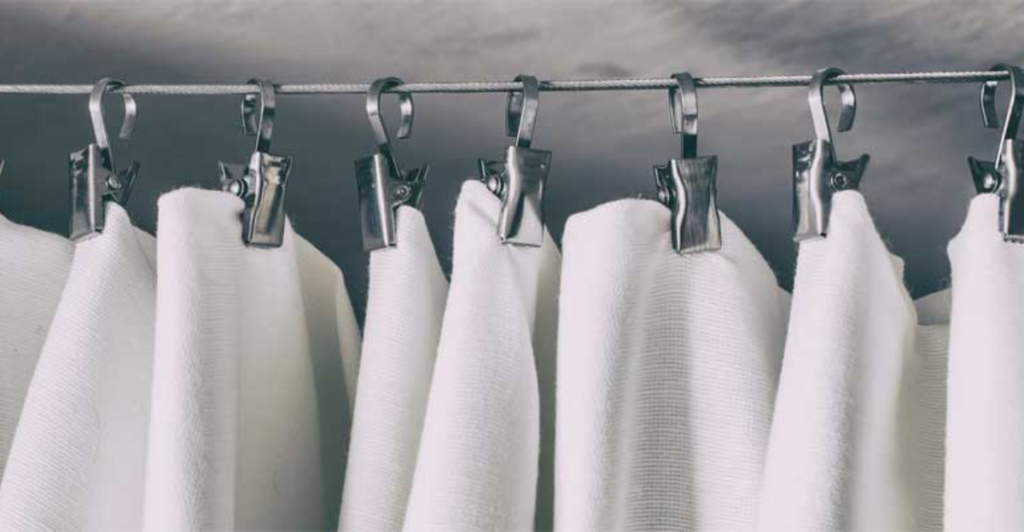
Why must a shower curtain remain in the bathroom? This trick takes waterproof, typically boldly printed shower curtains and repurposes them as bold living room, bedroom, or even outdoor drapes. The secret lies in recontextualization—a principle that avant-garde artists hold dear.
Choose fabric-friendly hooks and hem to fit if needed. Shower curtains are frequently mildew-resistant, making them ideal for sunrooms or patios. Use industrial clips for a modern art gallery effect. The design world calls this “found object” style and makes a $15 Target purchase a conversation starter.
8. Painted Canvas Curtains: DIY Meets Fine Art
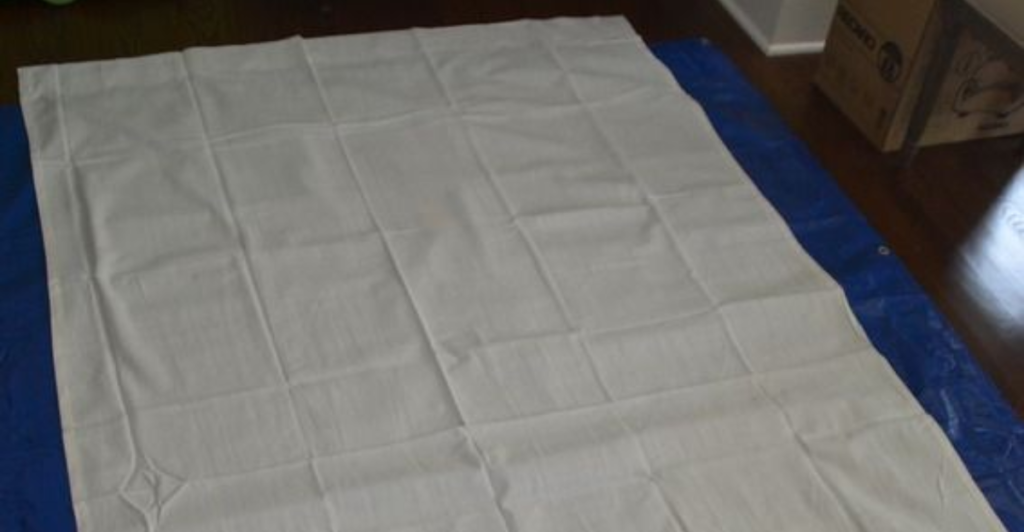
This is where Pinterest meets Pollock. Start with white canvas drop cloths and turn them into floor-to-ceiling art pieces with fabric paint or textile dye. The pieces can be abstract, geometric, or figurative—whatever your inner artist demands.
Historically, large painted tapestries represented nobility; now, they represent creative license. Design student programs now study these hybrid categories of decor as “ambient interfaces” because they blur the line between art and function.
So let your artist flag fly: use masking tape to create sharp lines, sponges to create gradients, or even thermochromic paint that responds to sunlight. Now your curtains become an interactive window that showcases your personality.
9. Patchwork Curtain Made from Recycled Fabric: Sustainability with Character

Patchwork curtains tell stories. Each square can be made from something special or personal, such as a reused shirt, an old baby blanket, or an antique piece of fabric found at a flea market.
This is sustainable at its personal best. Moreover, studies published in the Journal of Environmental Psychology in 2021 have shown that concrete, memory-laden interiors can improve emotional health.
In a world hurtling toward homogeneity, patchwork celebrates flaws, and no two are alike. You needn’t learn to quilt—only access to a basic sewing machine or fusible webbing. These curtains are not just aesthetics; they’re biography in motion.
10. Magnetic Snap-On Curtains: The Modular Revolution

Magnetic snap-on curtains are the most futuristic, modular approach to window dressing. With magnets sewn or inserted into fabric edges, you can remove or add curtain panels with a satisfying snap.
The system allows you to change colors, textures, or seasonal styles at will. Add to that a magnetic base frame on your window, and you’ve got a curtain system that feels more like a responsive interface than a static panel.
With a little skill, you can even make these yourself, without having to spend much on commercial brands. Not only is it clever—it minimizes hardware and maximizes adaptability, especially in tiny homes or RVs.
Discover more trending stories and Follow us to keep inspiration flowing to your feed!

Craving more home and lifestyle inspiration? Hit Follow to keep the creativity flowing, and let us know your thoughts in the comments below!
